
SEN In Early Years
Providing Speech and Language Support to Children with SEN
The use of speech and language is a critical component which lies at the heart of learning in its broadest sense. It is essential to human thought, communication and social interaction, allowing the transmission of ideas, concepts and understandings, and also serving as the principal means by which individuals order their own social experience and conduct their social relationship with others. Furthermore, as Meighan1 notes, children developing their own language skills soon begin to notice the detail of how others communicate:
‘… the linguistic rules they seem to obey, the styles to which they appear to conform, and the particular symbols they employ to describe the world,’ and use these observations to shape their own speech.
The diagram below outlines the basic elements of a communication encounter:
The Communication Process
Developed from Crystal and Varley2 (1998).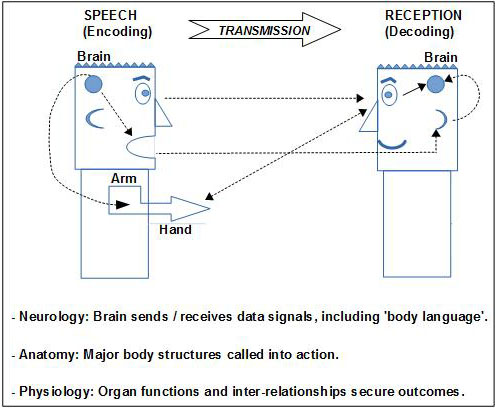
For a broad range of reasons, children with SEN may not have managed to acquire sufficient competence to control every aspect of this complex communication chain. Frederickson & Cline3 list the five key language competences which effective communication demands as:
- Phonology and syntax – how words sound and fit together;
- Semantics – the meanings of words;
- Pragmatics – the social conventions which apply;
- Conversational competence – the ability to customise speech to the needs of each listener;
- Sociolinguistic competence – understanding how social and cultural contexts impact upon language conventions.
If you want to read more about how language develops, check out our Language Development article.
The Role of Assessment
Individual assessment is essential to explore and understand the possible implications of any impairment. For example, a young child blind from birth may learn a new object word, such as ‘towel’, quickly enough but seem to have much greater difficulty than his classmates in grasping how the word can be extended (e.g. its transferable use in multiple contexts: from the kitchen to the bathroom and beach, paper towels etc.). Although linguistic experts may disagree about why this may happen, most accept that the lack of visual feedback plays an important part.
‘Children must not be considered as having a learning difficulty solely because the language spoken in their home is different from the language in which they will be taught.’ Devarakonda (2013)
Surveys adopting different research criteria have tended to mask the extent of early childhood language difficulties, though experts accept the incidence of problems is comparatively high among preschool children. Commenting upon general language achievements, Hartshorne4 (2009) suggests up to 80 per cent of children enter primary school with ‘impoverished speech and poor listening skills’, whilst Law and Tamhne5 (2000) conclude that ‘studies suggest that as many as 7 per cent of children may have difficulties which warrant attention’ – statistically equivalent to one child in every average-size nursery group.
Though Law and Tamhne agree many children displaying early speech and language difficulties resolve them without resort to specialist intervention, they caution that early delays constitute ‘a risk factor both for subsequent speech and language difficulties and for other schooling and social problems‘.
Is Your Setting SEN Ready? – Free Email Course
Speech and Language Impairment: Principal Areas of Concern
The following diagram illustrates the specific areas of difficulty a child with speech and language difficulties may experience: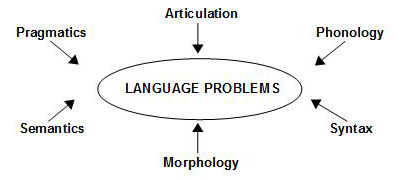
Using the above functional descriptions, Crutchley6 et al. detailed the problems encountered by children undergoing typical speech and language therapy as:
- Articulation – pronunciation problems attributed to physical difficulties.
- Phonology – pronunciation problems attributed to non-physical difficulties.
- Syntax – problems assembling words into multi-word sentences or understanding complex sentences.
- Morphology – problems deriving new words from existing words, or from the use of inflexions.
- Semantics – difficulties with the meaning of words.
- Pragmatics – difficulties with the use of language in social contexts.
This discussion will consider three important contexts in which speech and language difficulties can occur:

-
- difficulties arising alongside other disabilities;
- specific language impairment;
- communication problems attributed to emotional and social difficulties.
You can read more about emotional and social difficulties in our article: Behavioural, Emotional and Social Difficulties
Speech and Language -Acquisition Problems Occurring Alongside Other Disabilities
Infants naturally acquire communication competence through close human contact in multi-sensory settings where, as Whitehead7 records, pre-verbal experiences pave the way for language development. Access to such natural influences can be restricted or denied if, for example:
– circumstances of neglect and deprivation severely limit language input;
– audio and/or visual input is unavailable due to impairments;
– severe physical difficulties prevent the functioning of speech mechanisms.
Adapting other mechanisms to compensate for deficits is a characteristic of human development, thus it is common to find a child with significant visual impairment will often develop acute hearing to maximise acoustic inputs. Where difficulties cannot be supported or overcome by such means – as in cases where motor control is insufficient to allow speech development – it is very important to use Augmentative and Alternative Communication (AAC) methods and technologies to ensure a child still develops into an active communicator.
Specific Speech and Language Impairment
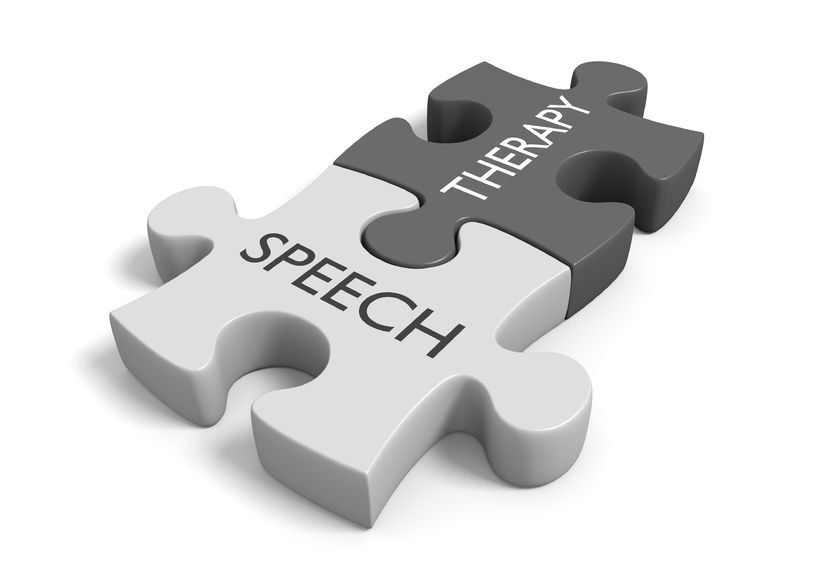
Where children show satisfactory development in other domains, but not in speech and language, this is regarded as a specific language impairment (SLI). Modern thinking no longer chooses to diagnose SLI by systematically excluding all other factors. Thomas8, for example, comments that SLI suggests ‘an atypical learning process’ in which ‘impaired behaviour is the outcome of development working under other constraints’. The definition offered by Lees and Urwin9, summarised in the table below, reflects a more-contemporary inclusive assessment:
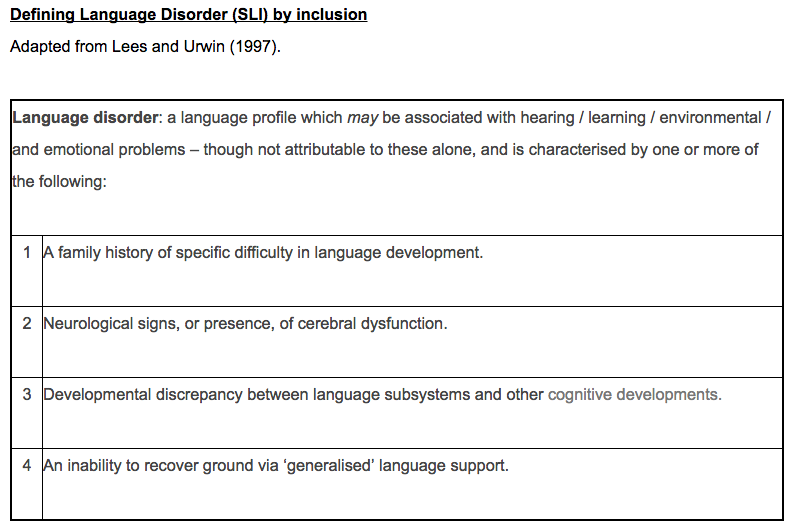
Early-years children with SLI require the support of a speech and language therapist who will liaise with teachers and other professionals to devise and deliver appropriate remedial interventions.
Communication Problems Attributed to Emotional and Social Difficulties
The frustration of SLI can cause the emergence of secondary difficulties affecting a young child’s behaviour and ability to form peer relationships. Occasionally, a child acquires language skills yet cannot use them due to the influence of emotional and social difficulties. This can give rise to the phenomenon of selective mutism where a child is verbal in some settings, but non-verbal in others. Though comparatively rare, this behaviour seems to affect children in the 3-5 age group and seems to coincide with transitions such as moving into a nursery or similar childcare facility.
Given that a selectively mute child can and will speak in certain contexts, conventional language therapy is mostly ineffective. However, behavioural methods involving sensitive staged acclimatisation to the new environment have been shown to work.
The Impact of Intervention
As Pritchard and Brodie10 remind us, early years practitioners are uniquely placed to observe the specifics of language problems, and thus may often be called upon to note the precise nature of a language difficulty. This helps to ensure that any professional intervention is optimally targeted to achieve the best possible outcomes. If proof was ever needed that such efforts are always worthwhile, Whitehead supplies it in her account of American author and lecturer Helen Keller’s compassionate and ‘inspired teacher’ who:
‘placed the hands of the blind and deaf Helen Keller under a gushing water pump and constantly wrote the letter signs w-a-t-e-r on the child’s palms as the water poured over them.
[References]




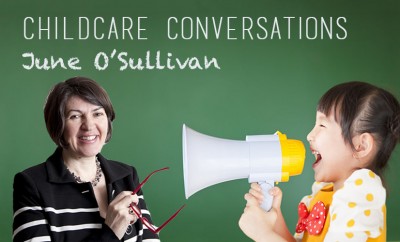


You must be logged in to post a comment Login